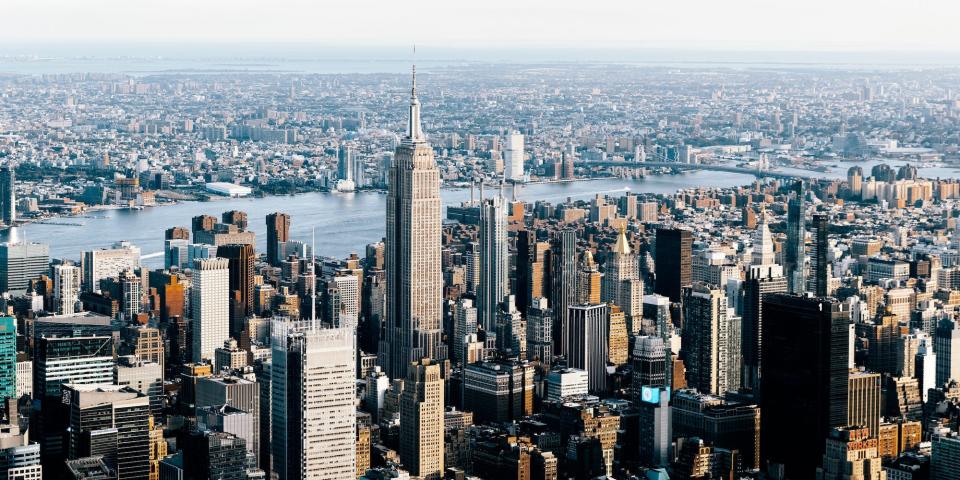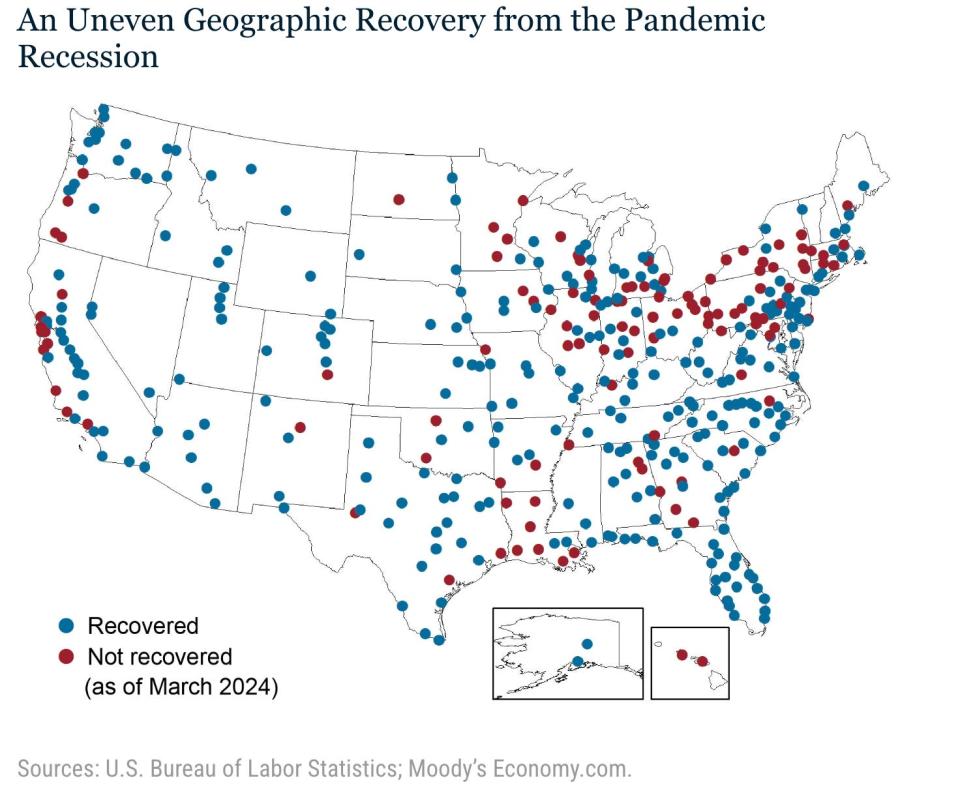These 3 metro regions still haven't recovered from the pandemic recession

More than a quarter of US metros are still recovering from COVID-era job losses, the Federal Reserve Bank of New York reported.
These are chiefly located in Rust Belt states, the South, and Northeast.
Today's job market amplifies fears of another recession, which some experts say could hit as soon as this year.
As analysts clash over when the next recession will befall the US, large swaths of the country are still bogged down in the previous downturn.
That's as labor markets continue to struggle in more than a quarter of US metros, having never reversed COVID-era job losses, the Federal Reserve Bank of New York reported this week.
"More than four years have passed since the onset of the pandemic, which resulted in one of the sharpest and deepest economic downturns in U.S. history," the bank wrote in a blog post, adding: "Many of the places that have not regained the jobs lost were hit particularly hard by the pandemic, leaving a deeper hole to dig out of."
At first glance, it would appear that US labor has won back its strength: By 2022, national employment undid the whopping 15% plummet it suffered two years prior. And today, unemployment remains below 4%.
However, this recovery has been all but even, with certain regions never regaining the jobs they once had. Often, these are metro areas with slow-growth economies, and the lack of workers has only dampened recovery momentum, the Fed said.
Grouped regionally, that includes the Rust Belt area, as well as sectors of the South, the note said. Delayed recoveries can also be found clustered in California, and Hawaii:
"In fact, employment is still more than 5 percent below pre-pandemic levels in New Orleans, and more than 3 percent below in Honolulu and San Francisco. Likewise, sizable job shortfalls remain in Cleveland, Detroit, and Pittsburgh," the Fed wrote.

But this trend is especially distinct in the Northeast, a region that's home to particularly impacted metros. New York City, which suffered as much as 19% job loss, has now just barely regained its employment levels. But the city's service sector continues to lag.
"Some places in upstate New York were hit by a 'triple whammy' of slow growth leading up to the pandemic that has now resumed, a deeper hole when the pandemic hit, and a declining labor force," the bank wrote.
Timing the next recession
Today, the eroding labor market is sparking renewed downturn fears. Conditions were most recently illustrated by April's jobs report, when added positions came in well below expectations, and unemployment ticked up.
In fact, one veteran analyst is convinced that a downturn is already here, when measured by unemployment's three-month average. By this indicator, a recession started in October, confirmed further by accelerating job erosion, Danielle DiMartino Booth said.
"There's already been 22,000 job loss announcements in the month of May and it's still a fairly young month. So on a seasonal level, we're seeing a major pickup," the QI Research CEO told Bloomberg.
Shrinking labor is also why analyst Frances Donald is betting on a "proper downturn," which will prompt aggressive interest rate cuts.
"Just about everything in the labor market that explains where we are in the labor cycle is pointing to a deterioration," Donald said last Tuesday. "We're not saying it's a big crisis, we're calling for two quarters of negative GDP — Q3 and Q4, could be Q4 and Q1."
But one expert is calling out a crisis. Wall Street veteran Gary Schilling told Business Insider to expect a coming job losses, as layoffs send the unemployment rate up between 5% to 7% this year.
Meanwhile, he warns that any recession would hammer at overconfident investors, sending markets crashing up to 30%.
Read the original article on Business Insider
